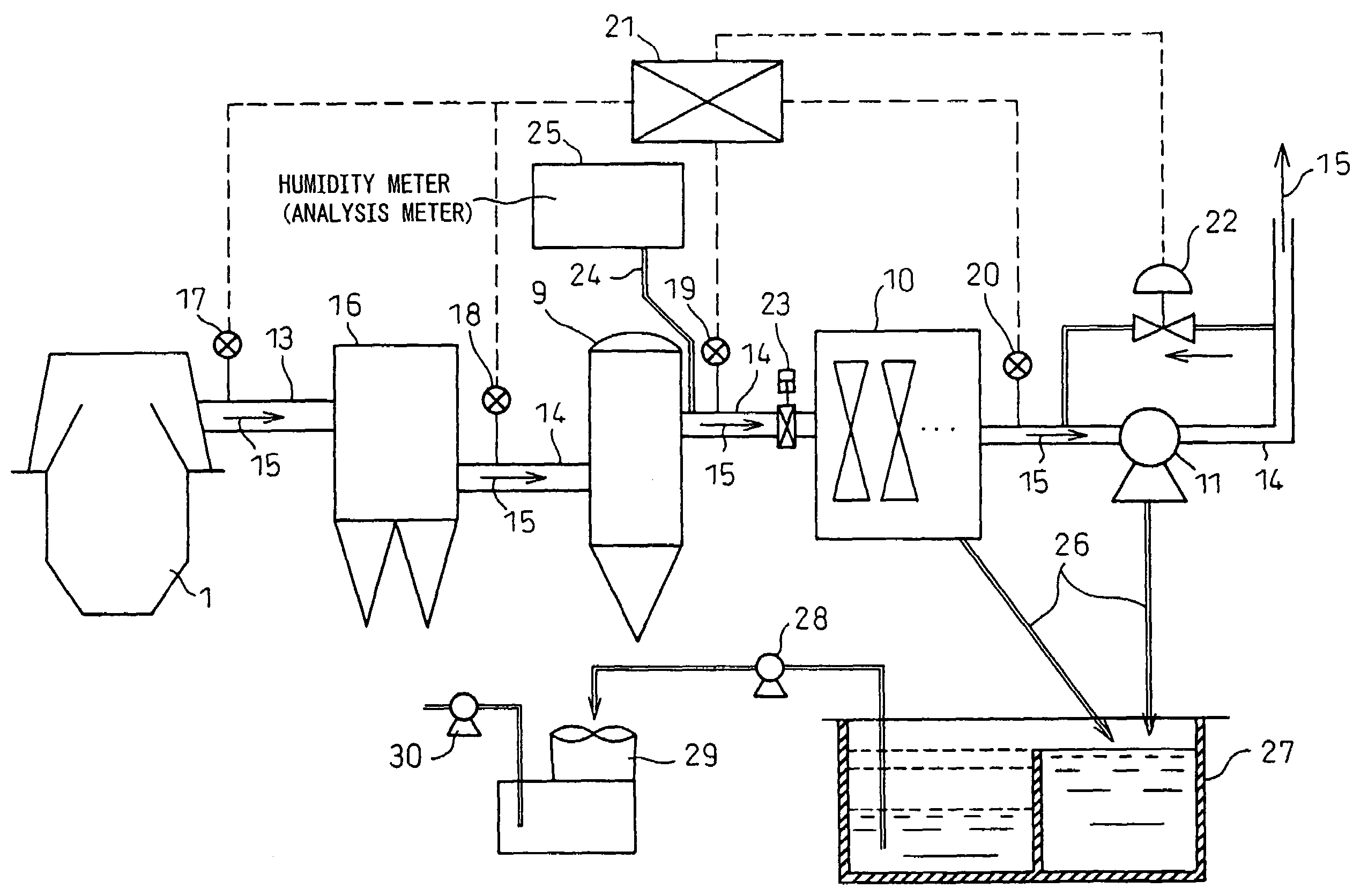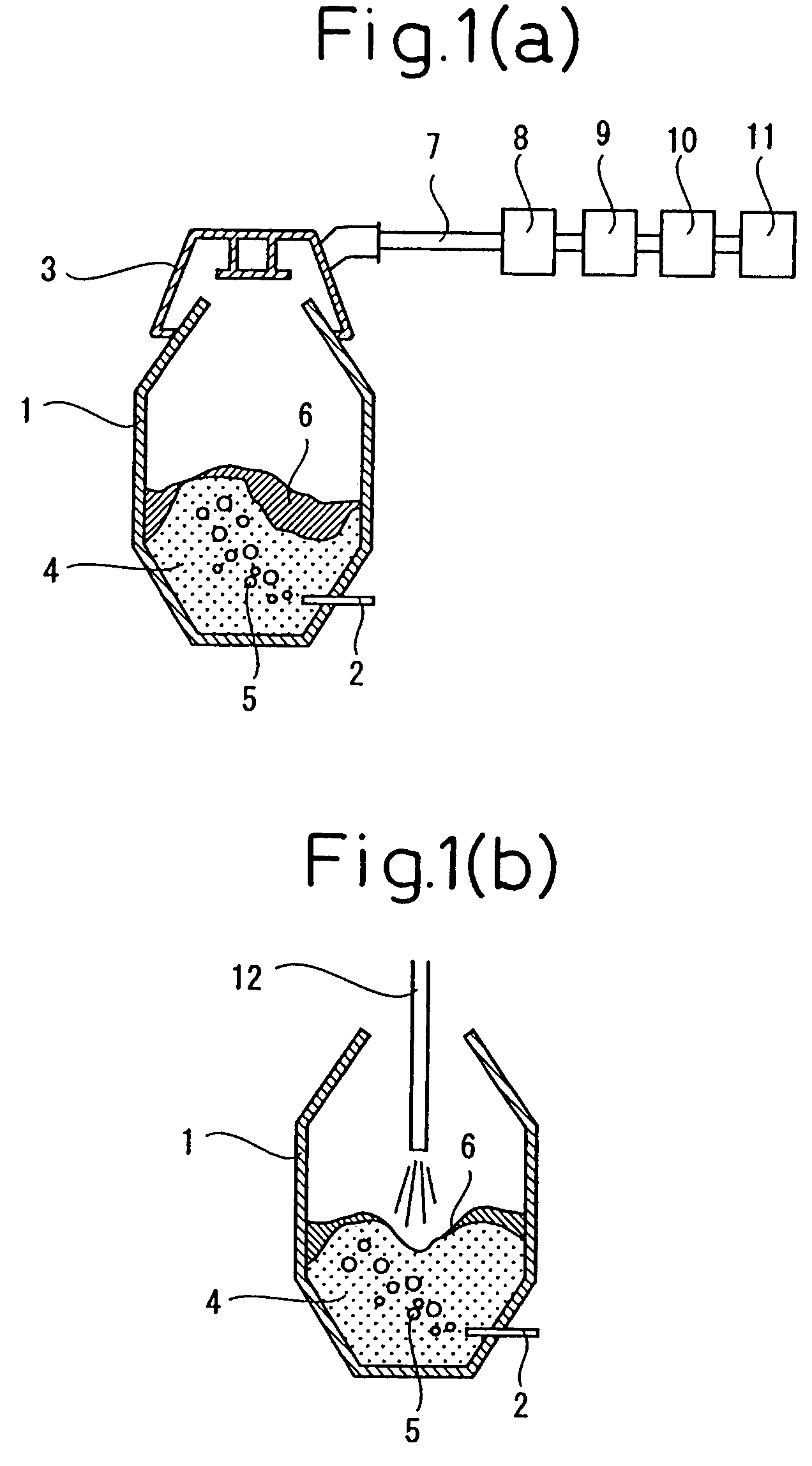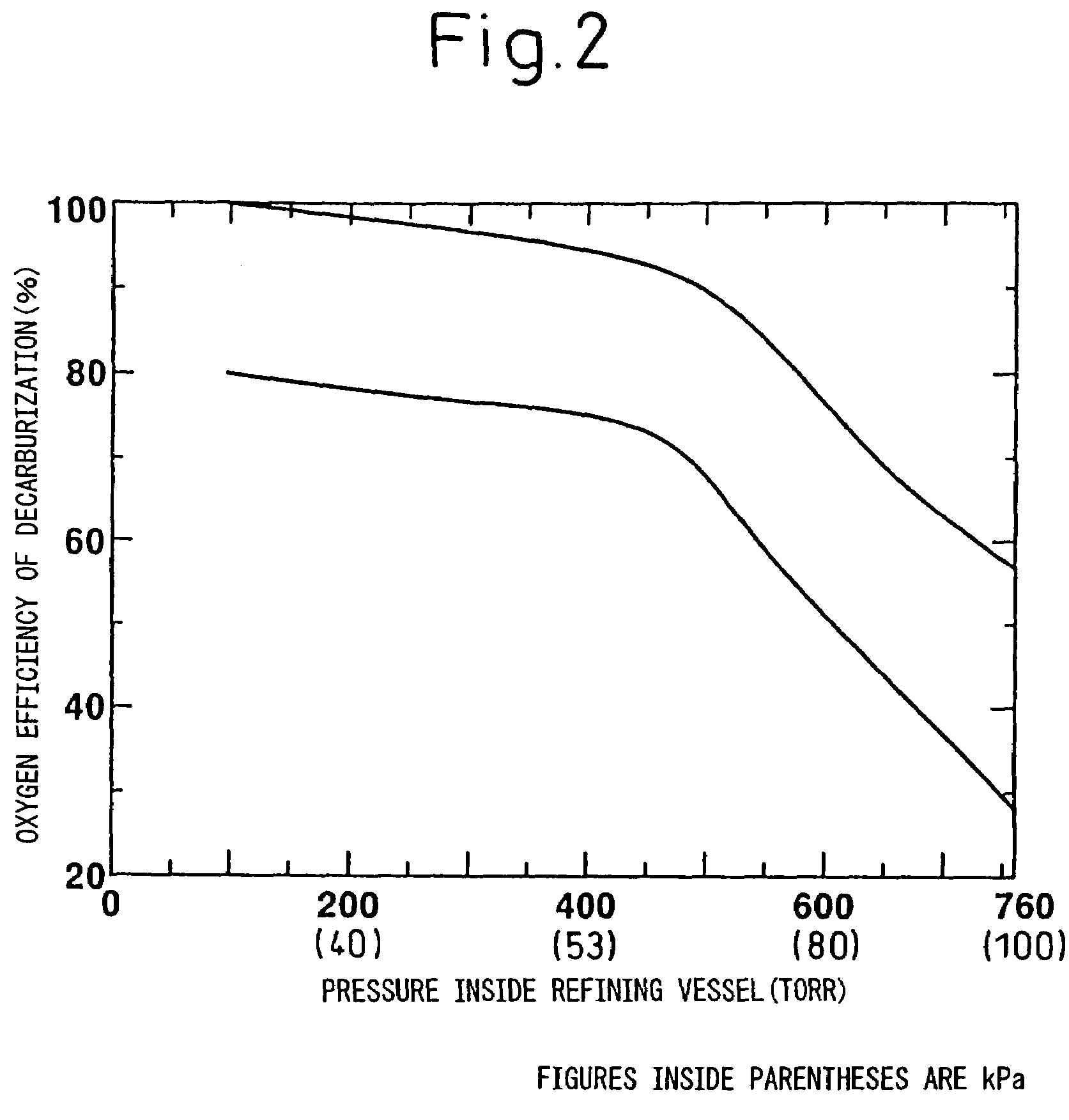Refining method and refining apparatus for chromium-contained molten steel
a technology of chromium-contained molten steel and refining apparatus, which is applied in the direction of manufacturing converters, charge manipulation, furnaces, etc., can solve the problems of long time required, large increase in the consumption of expensive inert gas, and unfavorable economic benefits, so as to reduce the amount of use of inert gas or oxygen gas, the effect of shortening the refining tim
- Summary
- Abstract
- Description
- Claims
- Application Information
AI Technical Summary
Benefits of technology
Problems solved by technology
Method used
Image
Examples
example 1
[0180]The pattern shown in Table 1 was used for refining. The first step was made atmospheric pressure refining with top and bottom blowing and use of oxygen gas alone as the bottom blown gas. A concentration of carbon of 0.5% to 0.15% was made the second step. The pressure inside the vessel in the second step was made a two-stage pressure of 350 Torr (46 kPa) and 250 Torr (33 kPa), the blow rates of the bottom blown gas were made 0.9 and 0.5 Nm3 / min, and the blown gas was made oxygen gas alone. The third step was made decarburization refining until a concentration of carbon of 0.04% at a pressure inside the vessel of a two-stage pressure of 100 Torr (13 kPa) and 40 Torr (5 kPa) and a blow rate of bottom blown gas held at 0.5 Nm3 / min.
[0181]At the first step, the oxygen gas is blown in alone until the concentration of carbon reaches 0.5%, so while the oxygen efficiency for decarburization falls somewhat and the oxidation of chromium increases, it was possible to slash the amount of u...
example 2
[0188]In the first vacuum refining, the pressure was restored to atmospheric pressure once when the decarburization progressed to a concentration of carbon of 0.08%, then the vessel was again evacuated and decarburization refining was performed until the target concentration of carbon. The blow rate of the bottom blown gas in the vacuum refining was made 0.5 Nm3 / min per ton melt. Table 3 shows the results of the present invention.
[0189]In a comparative example, vacuum refining was performed continuously until reaching the target concentration of carbon. The blow rate of the bottom blown gas in the vacuum refining was made 0.5 Nm3 / min per ton melt in the same way as the example of the present invention until a concentration of carbon of 0.15%. In a region of concentration of carbon lower than this, it was made 0.3 Nm3 / min per ton melt in the same way as in the past. Table 4 shows the results of the comparative example.
[0190]
TABLE 3Decarburization phaseAtmosphericRestoredReductionClas...
PUM
| Property | Measurement | Unit |
|---|---|---|
| pressure | aaaaa | aaaaa |
| pressure | aaaaa | aaaaa |
| pressure | aaaaa | aaaaa |
Abstract
Description
Claims
Application Information
 Login to View More
Login to View More - R&D
- Intellectual Property
- Life Sciences
- Materials
- Tech Scout
- Unparalleled Data Quality
- Higher Quality Content
- 60% Fewer Hallucinations
Browse by: Latest US Patents, China's latest patents, Technical Efficacy Thesaurus, Application Domain, Technology Topic, Popular Technical Reports.
© 2025 PatSnap. All rights reserved.Legal|Privacy policy|Modern Slavery Act Transparency Statement|Sitemap|About US| Contact US: help@patsnap.com



